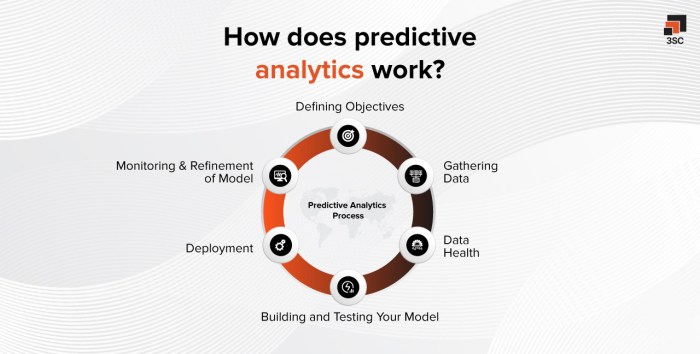Top Tax Mistakes Small Business Owners Make is a crucial topic for entrepreneurs seeking financial success. Navigating the complexities of tax law is a challenge for even the most seasoned business owners, and overlooking key aspects can lead to significant financial penalties and unforeseen complications. This guide will explore common pitfalls, offering practical strategies and insights to help small business owners avoid costly mistakes and ensure tax compliance.
From misclassifying workers and neglecting quarterly taxes to improperly claiming deductions and failing to track expenses adequately, the potential for errors is substantial. Understanding the nuances of tax regulations, available credits, and the importance of meticulous record-keeping are all vital for minimizing tax liability and maximizing profitability. We’ll delve into each area, providing clear explanations, practical examples, and actionable advice to help you confidently manage your business’s tax obligations.
Misclassifying Workers
One of the most significant tax mistakes small business owners make is incorrectly classifying their workers. This seemingly simple oversight can lead to substantial financial penalties and legal repercussions. Understanding the difference between employees and independent contractors is crucial for compliance and avoiding costly errors.
Tax Implications of Misclassifying Independent Contractors as Employees
Misclassifying an independent contractor as an employee has significant tax implications for both the business and the worker. The business is responsible for paying employment taxes (Social Security and Medicare taxes) on the worker’s wages, as well as withholding income tax. These taxes are typically split between the employer and employee. Failure to do so results in the business owing back taxes, interest, and potentially penalties. The misclassified worker may also face tax issues, such as owing self-employment taxes that were not properly withheld. This can lead to unexpected tax bills and potential financial strain.
Examples of Common Misclassification Situations
Several scenarios frequently lead to worker misclassification. One common example involves businesses engaging individuals for short-term projects, often under the guise of independence, while the business maintains significant control over their work, including scheduling, tools, and supervision. Another instance is where a business uses a worker consistently, regularly assigning tasks and paying them on a regular schedule, despite labeling them as an independent contractor. Finally, some businesses misclassify workers to avoid the administrative burden of employment taxes and benefits.
Penalties for Misclassifying Workers
The penalties for misclassifying workers can be substantial. The IRS can assess back taxes, including employment taxes (Social Security and Medicare taxes) and income tax withholding, plus interest and penalties. These penalties can range from a percentage of the unpaid taxes to significant fines. In severe cases, the IRS may also pursue criminal charges. Furthermore, the business may face legal action from the misclassified worker, who might sue for unpaid benefits or wages.
Comparison of Tax Responsibilities
| Tax Responsibility | Employee | Independent Contractor |
|---|---|---|
| Income Tax Withholding | Employer withholds from paycheck | Contractor pays estimated taxes quarterly |
| Social Security & Medicare Taxes (FICA) | Employer and employee each pay 7.65% | Contractor pays self-employment tax (15.3%) |
| Unemployment Insurance | Employer pays | Contractor is not eligible |
| Workers’ Compensation Insurance | Employer pays | Contractor is typically not covered |
Ignoring Quarterly Taxes
Many small business owners mistakenly believe that annual tax filing is sufficient. However, the IRS requires most self-employed individuals and small business owners to pay estimated taxes quarterly. This proactive approach ensures that tax obligations are met throughout the year, preventing a large, potentially overwhelming, tax bill at the end of the year. Failing to do so can lead to significant penalties and interest charges.
Ignoring quarterly tax payments can result in substantial financial penalties. The IRS levies penalties for underpayment of estimated taxes, calculated based on the amount and duration of the underpayment. These penalties can significantly impact your business’s cash flow and profitability. Furthermore, late payment can damage your credit score, making it more difficult to secure loans or lines of credit in the future. In addition to penalties, interest accrues on unpaid taxes, compounding the financial burden. A consistent history of late or missed payments may also lead to increased IRS scrutiny.
Calculating Quarterly Tax Payments
Accurately calculating quarterly tax payments requires careful consideration of several factors. The process begins with estimating your total taxable income for the year. This involves projecting your business’s revenue and deducting allowable expenses, such as cost of goods sold, business expenses, and qualified deductions. Remember that self-employment taxes (Social Security and Medicare taxes) are also due quarterly and represent a significant portion of the total tax liability. A common method involves taking your previous year’s tax liability as a starting point, adjusting it for anticipated changes in income and expenses. Many tax software programs and online resources provide helpful tools and calculators to simplify this process. It’s crucial to keep accurate records of income and expenses throughout the year to ensure an accurate estimate. For example, a freelancer earning $60,000 annually might estimate their quarterly payment by dividing their annual tax liability (including self-employment tax) by four.
A Simple Guide to Managing Quarterly Tax Obligations
Effective management of quarterly taxes requires organization and planning. A simple guide includes these key steps:
- Project Annual Income and Expenses: Carefully estimate your business’s income and allowable expenses for the entire year. Consider any anticipated changes in your business’s performance. This projection forms the basis for your tax calculation.
- Calculate Estimated Tax Liability: Use IRS Form 1040-ES, Estimated Tax for Individuals, or tax software to calculate your estimated tax liability. This includes income tax and self-employment tax.
- Divide by Four: Divide your total estimated tax liability by four to determine your quarterly payment amount.
- Set Up Payment Reminders: Use a calendar, planner, or tax software to set reminders for each quarterly payment deadline (April 15, June 15, September 15, and January 15).
- Make Timely Payments: Pay your estimated taxes on time using one of the IRS’s accepted methods, such as online payment, mail, or through a tax professional.
- Maintain Accurate Records: Keep detailed records of your income, expenses, and tax payments throughout the year. This documentation is crucial for tax preparation and potential audits.
Improperly Claiming Deductions
Claiming the correct deductions is crucial for minimizing your tax liability. Many small business owners unintentionally make mistakes, either overlooking legitimate deductions or incorrectly claiming others, leading to unnecessary tax burdens. Understanding the rules and limitations surrounding deductions is essential for accurate tax filing. This section will clarify common pitfalls and offer guidance on proper deduction application.
Many small business owners miss out on valuable deductions simply because they aren’t aware of them. Others may incorrectly apply deductions, leading to audits and penalties. Let’s explore some common areas of concern.
Home Office Deduction Rules and Limitations
The home office deduction allows you to deduct expenses related to a portion of your home used exclusively and regularly for business. This isn’t just a space where you occasionally work; it must be your principal place of business or a place used to meet clients, customers, or patients. The deduction is calculated based on the percentage of your home used for business. For example, if 10% of your home is used for business, you can deduct 10% of your eligible home-related expenses, such as mortgage interest, property taxes, utilities, insurance, and repairs. There are limitations, however. The total home office deduction cannot exceed your net business profit.
Frequently Incorrectly Claimed Deductions
Several deductions are frequently misapplied. One common mistake is overstating the amount of home office deduction. Another is improperly deducting personal expenses as business expenses. For instance, a portion of your cell phone bill might be deductible if used for business, but the entire bill is not unless your business is exclusively reliant on that cell phone. Similarly, claiming personal travel as business travel is another frequent error. Only travel directly related to business activities is deductible. Meal expenses are another area of concern; only 50% of business-related meal expenses are deductible.
Frequently Misused Deductions and Their Correct Application
It’s important to understand the specific rules and requirements for each deduction. Here’s a list of frequently misused deductions and their correct application:
| Deduction | Correct Application | Common Mistake |
|---|---|---|
| Home Office | Exclusive and regular use for business; percentage of eligible expenses based on business use; cannot exceed net business profit. | Overstating the percentage of home used for business; including personal expenses. |
| Vehicle Expenses | Actual expenses (gas, oil, repairs, depreciation) or standard mileage rate; must be used for business purposes. | Claiming personal vehicle use as business use; inaccurate record-keeping. |
| Travel Expenses | Directly related business travel; lodging, airfare, and a portion of meals (50%). | Including personal travel; insufficient documentation. |
| Meal Expenses | 50% of business-related meals; must be directly associated with business activities. | Claiming 100% of meal expenses; including personal meals. |
| Entertainment Expenses | Directly related to business; limited to 50% deduction. | Claiming personal entertainment; lack of proper documentation. |
Remember, maintaining meticulous records is crucial for supporting your deductions. Keep detailed receipts, invoices, and logs to substantiate every expense you claim. Consulting with a tax professional can help you navigate the complexities of deductions and ensure you’re claiming everything you’re entitled to, while avoiding potential penalties.
Failing to Track Expenses
Maintaining accurate records of business expenses is crucial for small business owners. Failing to do so can lead to significant tax liabilities and even penalties from the IRS. Meticulous expense tracking allows for the accurate calculation of deductions, ultimately reducing your taxable income and maximizing your profits. This process also provides valuable insights into your business’s financial health, aiding in better financial decision-making.
Effective expense tracking ensures you can substantiate every deduction claimed on your tax return. The IRS requires solid evidence to support expense claims, and without proper documentation, you risk having your deductions disallowed. This could result in a substantial tax bill, interest charges, and potential penalties. Therefore, establishing a robust expense tracking system is not merely a good practice but a necessity for responsible financial management.
Effective Expense Tracking Methods, Top Tax Mistakes Small Business Owners Make
Several methods exist for tracking business expenses, each with its own strengths and weaknesses. Choosing the right system depends on your business’s size, complexity, and your personal preferences. A well-organized system will significantly simplify the tax preparation process and minimize the risk of errors.
- Spreadsheet Software (e.g., Excel, Google Sheets): Spreadsheets offer a flexible and customizable approach. You can create columns for date, description, category, amount, and any other relevant information. The primary benefit is control and customization; however, it requires manual data entry and can be time-consuming for businesses with numerous transactions.
- Accounting Software (e.g., QuickBooks, Xero): Accounting software provides a more comprehensive solution, automating many aspects of expense tracking. These programs often integrate with bank accounts and credit cards, automatically importing transaction data. While offering automation and reporting features, the initial cost and learning curve can be a barrier for some.
- Manual Methods (e.g., Receipt Book, Notebook): For very small businesses with minimal transactions, a manual system using a receipt book or notebook might suffice. This method is simple and inexpensive, but it is prone to errors and lacks the organizational features of digital systems. It also makes generating reports and summarizing expenses more challenging.
Minimizing Tax Liability Through Accurate Expense Tracking
Accurate expense tracking directly translates to lower tax liability. By meticulously recording all eligible business expenses, you can claim legitimate deductions, reducing your taxable income. For example, if a business owner accurately tracks their mileage for business trips, they can deduct the appropriate amount per mile allowed by the IRS. Similarly, detailed tracking of office supplies, rent, and other expenses allows for the accurate deduction of these costs, lowering the overall tax burden. This translates to more money remaining in your business to reinvest in growth and development. Failing to track these expenses means potentially missing out on significant tax savings.
Proper expense tracking is not just about saving money on taxes; it’s about gaining a clearer understanding of your business’s financial performance and making informed decisions.
Not Understanding Tax Credits

Navigating the world of small business taxes can be daunting, and one area that often trips up owners is the realm of tax credits. Unlike deductions, which reduce your taxable income, tax credits directly reduce the amount of tax you owe, dollar for dollar. Understanding and utilizing available credits can significantly lower your tax burden and boost your bottom line. This section will explore several key tax credits relevant to small businesses.
Available Tax Credits for Small Businesses
Several federal tax credits can benefit small business owners, depending on their specific circumstances. These credits can offer substantial savings, making it crucial to understand their eligibility requirements and how to claim them. Failure to claim these credits could mean leaving significant money on the table.
Research and Development Tax Credit (R&D Credit)
This credit incentivizes businesses to invest in research and development activities. It’s designed to encourage innovation and technological advancement. To claim the R&D credit, a business must demonstrate that it incurred qualified research expenses, which generally include wages, supplies, and contract research expenses. These expenses must be related to activities that meet specific criteria, including aiming to discover new technological information, improving existing technology, or developing a new product or process.
For example, a software company developing a new algorithm for data analysis would likely qualify for the R&D credit, as would a manufacturing firm investing in the development of a more energy-efficient production process. The amount of the credit is calculated based on the qualified research expenses and is subject to certain limitations.
Work Opportunity Tax Credit (WOTC)
The WOTC offers tax credits to employers who hire individuals from certain targeted groups, such as veterans, ex-offenders, and long-term recipients of public assistance. This credit aims to reduce unemployment and promote workforce diversity. To claim the WOTC, employers must obtain a pre-hire certification from the Department of Labor for each eligible employee before hiring them. The credit amount varies depending on the employee’s category and the number of hours worked.
A small business owner hiring a veteran with a service-connected disability would qualify for a higher credit than one hiring an individual from another targeted group. Proper documentation and timely application are crucial for successfully claiming this credit.
Small Business Health Care Tax Credit
This credit is designed to help small businesses offset the cost of providing health insurance to their employees. It’s available to eligible small businesses with a limited number of employees and average annual wages below a certain threshold. The credit is calculated based on the amount of health insurance premiums paid by the business.
A small bakery with fewer than 25 employees and modest average wages might be eligible for this credit, significantly reducing the financial burden of providing employee health insurance. Understanding the eligibility requirements regarding employee numbers and wage limits is essential.
Summary of Tax Credits for Small Businesses
- Research and Development (R&D) Credit: Incentivizes investment in R&D activities. Eligibility requires qualified research expenses related to technological innovation. Potential benefit: Direct reduction in tax liability based on qualified expenses.
- Work Opportunity Tax Credit (WOTC): Provides credits for hiring individuals from targeted groups. Eligibility requires obtaining pre-hire certification from the Department of Labor. Potential benefit: Varies depending on the employee’s category and hours worked.
- Small Business Health Care Tax Credit: Assists small businesses in providing employee health insurance. Eligibility requires meeting criteria for employee numbers and average annual wages. Potential benefit: Reduction in the cost of employee health insurance premiums.
Neglecting Record Keeping
Maintaining meticulous financial records is paramount for any small business, regardless of size or industry. Accurate and organized bookkeeping is not merely a best practice; it’s a legal necessity that safeguards against potential tax liabilities and ensures smooth financial management. Failing to keep proper records can lead to significant complications during tax season and in the event of an audit.
Proper record-keeping provides a clear and verifiable picture of your business’s financial health, allowing for informed decision-making and efficient tax preparation. It simplifies the process of tracking income, expenses, and deductions, reducing the likelihood of errors and omissions. Furthermore, comprehensive records serve as valuable documentation should any disputes arise with tax authorities.
Best Practices for Storing and Organizing Financial Documents
Effective record-keeping involves a systematic approach to both storing and organizing financial documents. A well-structured system ensures easy access to necessary information when needed, minimizing time spent searching for specific documents. This efficiency translates to cost savings and reduced stress during tax season and potential audits. Consider implementing a combination of digital and physical storage methods, leveraging the strengths of each.
Consequences of Inadequate Record Keeping During a Tax Audit
The consequences of inadequate record-keeping during a tax audit can be severe. The IRS may assess penalties for failing to maintain proper records, potentially including back taxes, interest, and fines. In extreme cases, the business owner may face criminal charges. Even without a formal audit, poor record-keeping can hinder accurate tax preparation, leading to underpayment or overpayment of taxes. This can result in financial penalties and reputational damage. A well-organized system allows for efficient responses to audit requests, mitigating potential penalties and ensuring compliance.
Sample Record-Keeping System for a Small Business
A robust record-keeping system for a small business should encompass both physical and digital components. For example, a system might involve using cloud-based accounting software to track transactions, while also maintaining physical copies of important documents like invoices and receipts in a well-organized filing cabinet. A clear file organization system, using a combination of chronological and categorical filing, is crucial. Documents should be categorized by type (e.g., invoices, receipts, bank statements) and year. A consistent retention policy should be established, adhering to IRS guidelines for document retention periods. For example, tax returns should be kept indefinitely, while receipts for ordinary business expenses may only need to be kept for three years. Regular backups of digital records are essential to protect against data loss. This comprehensive approach ensures the business is prepared for tax season and potential audits.
Not Filing on Time
Failing to file your business taxes on time can lead to significant financial penalties and administrative headaches. Even if you believe you owe little or nothing, timely filing is crucial for maintaining compliance and avoiding potential issues. This section details the consequences of late filing, the process for obtaining an extension, and strategies for preventing this common mistake.
Penalties for Late Filing
The Internal Revenue Service (IRS) imposes penalties for late tax filings. These penalties are calculated based on the unpaid tax amount and the length of the delay. For example, a penalty might be assessed as a percentage of the unpaid taxes owed, increasing the longer the delay. Furthermore, interest accrues on any unpaid tax liability from the original due date until the tax is paid in full. The exact penalties can vary depending on the circumstances and the length of the delay, so it is crucial to consult the IRS website or a tax professional for the most up-to-date information. Ignoring these penalties can significantly increase your tax burden. For instance, a small business owner who delays filing for several months could face substantial penalties, potentially impacting their cash flow and business operations.
Requesting a Tax Extension
If you anticipate needing more time to file your taxes, you can request an automatic six-month extension. This extension only applies to filing, not paying. You must file Form 7004, “Application for Automatic Extension of Time To File Certain Business Income Tax, Information, and Other Returns,” by the original tax filing deadline. This form allows you to request an extension without providing an explanation for the delay. However, it’s crucial to remember that even with an extension, you’re still responsible for paying any taxes owed by the original due date. Failure to pay on time will still result in penalties and interest charges. Obtaining an extension gives you more time to gather your financial documents and accurately complete your tax return, reducing the risk of errors and potential audits.
Situations Leading to Late Filing and Avoidance Strategies
Several factors can contribute to late tax filings. Poor record-keeping, complex business transactions, unexpected life events (illness, family emergencies), and a lack of familiarity with tax laws are common causes. To avoid late filing, implement a robust record-keeping system, utilize accounting software, and consider seeking professional tax advice. Proactive planning, including setting aside time specifically for tax preparation well in advance of the deadline, is essential. Furthermore, staying organized and keeping meticulous records throughout the year significantly simplifies the tax preparation process, reducing the likelihood of delays. For example, a small business owner who consistently updates their accounting software throughout the year will find tax preparation far less daunting than someone who waits until the last minute.
Checklist for Timely Tax Filing
A well-organized approach is key to timely filing. The following checklist helps ensure you meet all deadlines:
- Gather all necessary financial documents (bank statements, invoices, receipts, etc.) throughout the year.
- Maintain accurate and organized financial records using accounting software or a reliable system.
- Set realistic deadlines for tax preparation and stick to them.
- If needed, seek professional tax advice from a qualified accountant or tax advisor.
- File Form 7004 for an automatic extension if necessary, remembering that taxes are still due by the original deadline.
- Pay any taxes owed by the original due date, even if you’ve requested an extension.
- Keep copies of all filed documents and tax returns for your records.
Ignoring State and Local Taxes

Many small business owners focus heavily on federal taxes, often overlooking the significant impact of state and local taxes. These taxes, while varying widely by location, can represent a substantial portion of a business’s overall tax burden and failing to address them can lead to penalties and interest. Understanding and managing these taxes is crucial for maintaining financial health.
State and local tax structures differ significantly from the federal system. While the federal government levies income tax, payroll tax (Social Security and Medicare), and various other business taxes, states and localities have their own unique tax codes. These can include income taxes (often structured differently than federal income tax), sales taxes, property taxes, unemployment taxes, and various other specific levies depending on the business activity and location. For example, a business operating in a state with a high sales tax rate will face considerably different tax obligations compared to one in a state with a lower rate. Similarly, property taxes can vary dramatically based on the assessed value of the business’s property and the local tax rate.
State and Local Tax Types for Small Businesses
Common state and local taxes impacting small businesses include sales tax, which is levied on the sale of goods and services; income tax, which is imposed on the business’s profits; property tax, which is based on the value of owned real estate and equipment; and unemployment insurance tax, which funds state unemployment benefits programs. Many states also have specific taxes targeted at certain industries or activities. For instance, some states levy franchise taxes on corporations or excise taxes on specific goods or services. It’s critical to understand which taxes apply based on the business’s specific structure, location, and operations.
Determining State and Local Tax Obligations
Determining state and local tax obligations requires careful examination of the relevant state and local tax codes. Each state and locality has its own rules, forms, and filing deadlines. Businesses should consult their state’s department of revenue website or seek professional tax advice to ensure compliance. Key factors to consider include the business’s legal structure (sole proprietorship, partnership, LLC, corporation), its location(s) of operation, the type of goods or services it provides, and its annual revenue. Many states offer online tax resources and calculators to assist businesses in estimating their tax liability.
Navigating State and Local Tax Requirements
A proactive approach to state and local taxes is vital. This includes:
- Regularly reviewing state and local tax laws and regulations for any updates or changes.
- Maintaining accurate and detailed financial records to support tax filings.
- Using tax software or engaging a tax professional to assist with preparation and filing.
- Understanding and complying with all filing deadlines to avoid penalties.
- Establishing a system for tracking and paying taxes throughout the year, rather than waiting until the end of the tax year.
Ignoring state and local taxes can lead to significant financial penalties and legal issues. A thorough understanding of these taxes and diligent compliance are essential for the long-term success of any small business.
Improperly Handling Inventory

Accurate inventory management is crucial for small businesses, significantly impacting profitability and tax liability. Mismanaging inventory can lead to overstated or understated costs, resulting in incorrect tax filings and potential penalties. Understanding inventory valuation methods and their tax implications is essential for accurate financial reporting and compliance.
Inventory valuation directly affects the cost of goods sold (COGS), a critical component in calculating your taxable income. The method chosen impacts your reported profit and, consequently, your tax burden. Incorrectly valuing inventory can lead to either underpayment or overpayment of taxes, both carrying potential consequences.
Inventory Valuation Methods and Tax Implications
Businesses can use several methods to value their inventory for tax purposes. The most common are First-In, First-Out (FIFO), Last-In, First-Out (LIFO), and the Specific Identification method. Each method has different implications for calculating COGS and gross profit, ultimately influencing the tax liability.
FIFO assumes that the oldest inventory items are sold first. This method generally results in a higher net income during periods of inflation because the cost of goods sold is lower, leading to higher taxable income. LIFO, conversely, assumes that the newest inventory items are sold first. During inflation, this method generally leads to a lower net income because the cost of goods sold is higher, resulting in lower taxable income. The Specific Identification method tracks the cost of each individual item, providing the most precise valuation but is often more complex and time-consuming. The choice of method should be consistent from year to year for accurate financial reporting. Tax laws may restrict the use of certain methods, depending on the type of business and industry.
Impact of Inventory Errors on Tax Liability
Errors in inventory valuation directly affect the calculation of COGS. Overstating inventory leads to an understatement of COGS, inflating net income and resulting in a higher tax liability. Conversely, understating inventory leads to an overstatement of COGS, reducing net income and resulting in a lower tax liability. These errors can lead to significant discrepancies between reported income and actual income, potentially attracting penalties and interest from the tax authorities. In extreme cases, significant errors can lead to audits and investigations.
Examples of Common Inventory Management Mistakes
Common mistakes include failing to conduct regular physical inventory counts, inaccurate record-keeping, and neglecting to account for damaged or obsolete goods. For example, a small bakery might fail to account for spoiled bread, leading to an overstatement of inventory and an understatement of COGS. A clothing store might not accurately track returns, leading to an inaccurate inventory count and potentially incorrect COGS calculation. These seemingly minor errors can accumulate over time, significantly impacting the overall accuracy of financial reporting and tax calculations.
Visual Representation of Inventory Flow and Tax Impact
Imagine a conveyor belt representing the flow of inventory. Items enter the belt (representing purchases), move along (representing storage), and exit (representing sales). Each item has an associated cost. The valuation method (FIFO, LIFO, or Specific Identification) determines which cost is assigned to the exiting items (cost of goods sold). The difference between the cost of goods sold and the revenue generated from sales represents the gross profit. This gross profit, after accounting for other expenses, determines the taxable income. A miscalculation anywhere along this conveyor belt – incorrect initial cost, inaccurate tracking of items, or improper valuation method – directly impacts the final calculation of taxable income and thus, the tax liability. The further along the belt the error occurs, the more significant its impact on the final tax calculation.
Lack of Understanding of Tax Laws
Navigating the complex world of tax laws is a significant challenge for many small business owners. A lack of understanding can lead to costly errors, penalties, and even legal issues. Staying informed about current tax regulations is crucial for minimizing tax liabilities and ensuring compliance.
The constantly evolving landscape of tax legislation necessitates a proactive approach to learning and adapting. Failing to keep abreast of changes can result in missed opportunities for tax deductions and credits, as well as unintentional violations that attract significant penalties. Understanding the relevant tax regulations is paramount for successful business management.
Resources for Learning About Tax Laws
Several resources are available to help small business owners navigate the complexities of tax law. The Internal Revenue Service (IRS) website provides a wealth of information, including publications, forms, and instructions. The Small Business Administration (SBA) offers guidance and resources specifically tailored to small businesses. Furthermore, numerous reputable tax software providers and accounting professionals offer educational materials and consultations to assist with tax compliance. Utilizing these resources proactively can significantly reduce the risk of costly mistakes.
Consequences of Failing to Understand Tax Regulations
The consequences of not understanding tax laws can be severe. These range from penalties and interest charges for late filing or inaccurate reporting to more serious legal repercussions in cases of intentional tax evasion. Incorrectly classifying employees, miscalculating deductions, or failing to file quarterly taxes can all lead to substantial financial penalties. Furthermore, a lack of understanding can hinder a business’s ability to take advantage of available tax credits and deductions, leading to higher overall tax burdens. In extreme cases, non-compliance can result in legal action and damage to a business’s reputation.
Strategies for Staying Informed About Tax Law Changes
Implementing a robust strategy for staying informed is vital for small business owners. This involves regularly reviewing updates from the IRS and SBA websites, subscribing to relevant tax newsletters or publications, and attending workshops or seminars conducted by tax professionals. Engaging a qualified tax advisor can provide personalized guidance and ensure compliance with current regulations. Developing a proactive approach to tax planning, rather than a reactive one, is essential for minimizing risk and maximizing tax benefits. Regularly reviewing and updating internal processes to reflect current tax laws is also a crucial aspect of this strategy. For example, a business might schedule an annual review of its tax procedures to ensure they are compliant with the latest changes.
Final Review
Successfully navigating the tax landscape as a small business owner requires vigilance, proactive planning, and a thorough understanding of relevant regulations. While the complexities of tax law can seem daunting, taking the time to educate yourself, implement effective record-keeping systems, and seek professional advice when needed can significantly reduce your risk of making costly mistakes. By addressing the common pitfalls Artikeld in this guide, small business owners can build a strong foundation for financial stability and long-term success. Remember, proactive tax planning is an investment in your business’s future.
FAQ Explained: Top Tax Mistakes Small Business Owners Make
What happens if I miss the deadline for filing my business taxes?
Late filing penalties can be substantial, including interest charges on unpaid taxes. It’s crucial to file on time or request an extension if necessary.
Can I deduct my home internet bill as a business expense?
Potentially, if a significant portion of your internet usage is directly related to your business. Detailed record-keeping is essential to support this deduction.
Where can I find reliable resources to stay updated on tax law changes?
The IRS website, reputable accounting software, and professional tax advisors are excellent resources for staying informed.
What are some common overlooked tax credits for small businesses?
Research the Employee Retention Tax Credit (ERTC), the Research and Experimentation Credit, and others, as eligibility requirements vary.
Get the entire information you require about How to Conduct a Financial Audit for Small Businesses on this page.









